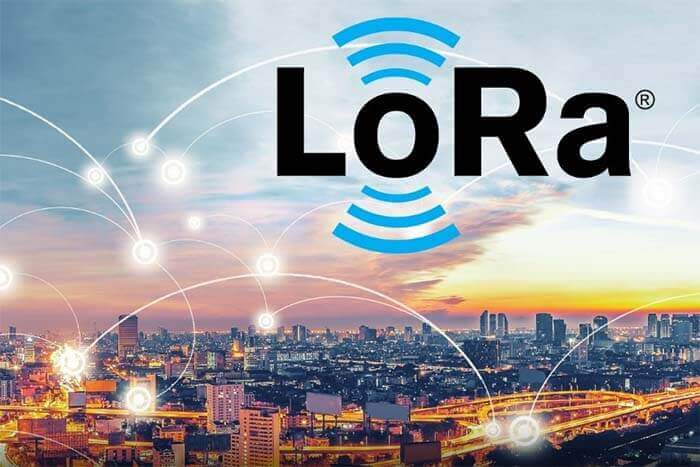LoRa integrates LR-FHSS functionality to support satellite communications with dense deployments.
It is estimated that terrestrial network connectivity covers only about 10% of the global surface area, and there are still many places in the world without carrier network signal coverage or the ability to set up base stations.
With the advantage of long-range, LoRa has been attracting attention in the field of satellite communication since its inception, and there are already relevant satellite communication applications on the ground both at home and abroad.
Previously, LoRa Alliance announced that the LoRaWAN protocol supports LR-FHSS (Long Range – Frequency Hopping Spread Spectrum) function.
Currently, Semtech’s LoRa chips already support LR-FHSS, which can significantly improve network capacity and anti-interference capability through software upgrades of LoRa chips and gateways, enabling low-power, reliable direct communication from sensors to satellites.
In satellite communications, LoRa technology has been used in animal husbandry, environmental management, forest fire prevention, and shipping.
The addition of LR-FHSS support to Semtech’s LoRa platform not only helps it provide more cost-effective, ubiquitous connectivity to remote areas but also marks an important step toward large-scale IoT deployments in densely populated areas, further driving global LoRa deployments and application innovation for smart industries, smart parks, and other areas.
What are the features of LR-FHSS?
The two main features of LR-FHSS: large capacity access and super anti-interference
LR-FHSS can support millions of terminal nodes through ISM band and dedicated frequency band, providing higher reliability for IoT services, and it significantly increases the network capacity, which can solve the channel congestion problem that has been restricting the development of LoRaWAN before.
In addition, LR-FHSS has high interference immunity, mitigates packet conflicts by improving spectral efficiency, and has the uplink frequency hopping modulation capability.
During operation, LR-FHSS breaks each packet sent by an end node into small chunks (each approximately 50 ms long) and randomly spreads them over defined frequency bandwidths (including 137 kHz, 336 kHz, and 1.523 MHz, depending on the region).
In addition, the LR-FHSS uses redundant physical connectors at different frequencies to further improve the modulation robustness to in-band interference sources.
Integrating LR-FHSS to drive LoRa application expansion
Wi-Fi has grown exponentially over the past two decades by expanding the available frequency bands (2.4GHz, 5GHz, and 6GHz) and channel bandwidths (20MHz, 40MHz, 80MHz, and 160MHz).
Similarly, LR-FHSS will also drive LoRa deployments globally.
LoRa has a natural advantage in satellite communications due to its ecological integrity, long-range, anti-interference, low power consumption, and overall low cost (no additional hardware development is required and it has its own satellite communication capability).
With the integration of LR-FHSS, LoRa will not only expand the network capacity but also better support the harsh radio application environment (deep indoor) and provide the possibility of increasing ground connection coverage in some areas, thus further expanding the application space.
Support satellite IoT services
LR-FHSS enables satellites to connect to vast remote areas of the globe, supporting location and data transmission needs in areas without network coverage.
Relevant LoRa use cases include wildlife tracking, marine vessel container location, ranch livestock location, smart agriculture solutions to improve crop yields, and global distribution asset tracking for supply chain efficiency.
LoRa-based satellite services offer lower prices to the market and will see growth opportunities in industries such as logistics, asset tracking, transportation, utilities, agriculture, and maritime.
Expand network capacity to support more frequent data exchange
Logistics and asset tracking, smart buildings and parks, smart homes, smart communities, and a host of other emerging LoRa-based use cases are emerging.
The amount of LoRa-modulated signals over the air is expected to increase significantly as signals from these application scenarios become longer and more frequently exchanged.
LR-FHSS can expand network capacity and enhance robustness without replacing existing network infrastructure.
The new LR-FHSS rates will support payloads at both high power and low rates, allowing for greater channel capacity at the lowest data rate end nodes.
With the increased capacity, outdoor or indoor LoRaWAN networks can also add more end nodes and support devices with frequent data exchange, such as industrial sensors with frequent data transmission.
In other words, the advantage of LR-FHSS high-capacity can break through the channel congestion problem that has been restricting the development of LoRaWAN before, and support the development of new applications and solutions in high-capacity scenarios such as smart industry and smart campus.
Enhance indoor deep coverage
In addition to expanding network capacity, LR-FHSS supports deeper indoor terminal nodes in the same network infrastructure, thus improving the scalability of large-scale IoT projects.
For example, LoRa is the technology of choice for the global smart meter market, and enhanced deep indoor coverage will further strengthen its position.
Smart cities have become a global trend, and the integration of LR-FHSS in the LoRa platform will bring even better coverage and performance to IoT solutions for a smarter, safer, and more sustainable world.
Besides the article, you may also be interested in the below articles.
What Is The Core 5G NR Technology?




